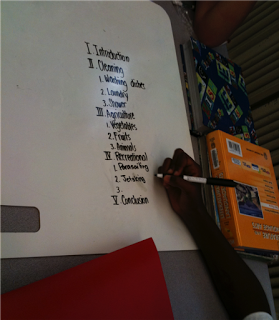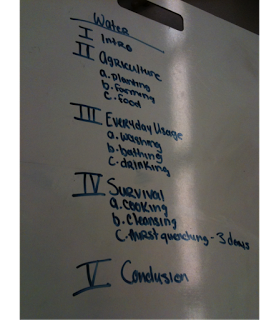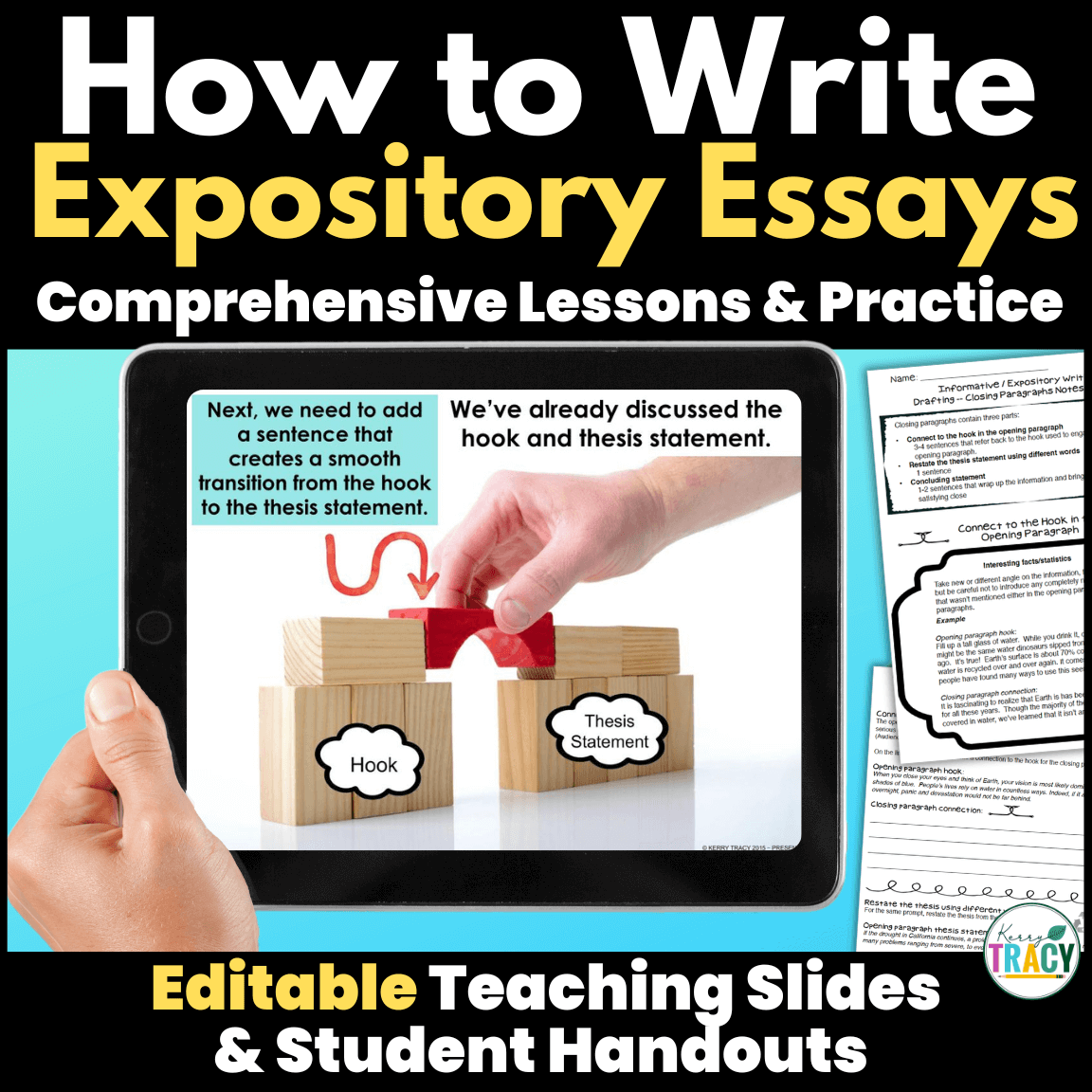Step 2: Outlines
 In my experience, students have an easier
In my experience, students have an easiertime with body paragraphs, so we always start there. Once they have already brainstormed and
categorized, outlining the body paragraphs is usually a quick process, though we often find during drafting that a quick outline is not always an effective outline! (Yet another example of where we must teach, not just assign writing!) Students need a LOT of practice creating outlines and evaluating outlines. They often have received some of the former, but little-to-none of the latter. The main skills we practice and apply when moving from brainstorming to outlining are combining ideas, considering order, and evaluating complementary – or the most important – details to support the topic/prompt.
Students’ ability to evaluate outlines improves as they gain experience using their own outlines to create drafts to varying degrees of success. This is to say, don’t view outline evaluation as sequential teaching; you’ll want to revisit the skill both in isolation and as part of the writing process frequently.
To start, you’ll need some example outlines to use to teach evaluation, preferably some examples that leave a lot of room for improvement – either weak ideas, ideas that aren’t different enough, overweighted paragraphs, poor organization, focus on less important aspects of the topic, etc. You can with get these samples by creating them yourself or asking for student volunteers (consider offering extra credit if they’re reluctant). (Shameless product plug: A lesson on evaluating outlines along with student samples is included in my Expository Writing unit.) Finally, start keeping student outline samples from your current class to use next year in evaluation lessons and/or in centers – removing students’ names of course!.
every outlines generated. One
of my main goals is to give students so much practice taking a topic/prompt
from brainstorm, to categorization, to outlines that they become
incredibly confident in their abilities. Some students are easily intimidated
by writing prompts. If you take the time for focused and frequent practice
brainstorming and outlining, you and your students will see it pay off!
 Once students have had many opportunities to
Once students have had many opportunities topractice whole class, in groups, and with partners, experienced students will
be able to practice outlining as bell work throughout the year. I can’t
highlight this enough. I want students to see a prompt and know from all their
experience, they will easily be able to brainstorm and outline.
Quick Tip 1: Conduct group/partner practice using large whiteboards. Outlining often involves a lot of moving and changing ideas. This is less frustrating with whiteboards. I love the 24 x 36 in. with handles (seen in these photos) for group activities across subject matter. (I got my boards for $13 each from www.DI-mac.com. Note: these work great, but need to be erased each day when you’re done. If you leave the marker for a couple of days, it’s hard to remove without using spray cleaner.)Quick Tip 2: Have students keep their practice outlines in a notebook. This is a great sub-day activity that requires no prep: students must create a draft from an outline of their choosing from their notebooks. Another option is to keep a folder of outlines in a center.
Part 2: Outlines (you are here now!)
plus:
6 Ways to Survive Teaching Writing
Teaching Persuasive Writing…Painlessly
PRODUCTS TO HELP YOU HELP YOUR STUDENTS BUILD SOLID WRITING, FROM TINY HOMES TO MANSIONS:
 |
| Expository Writing Unit
|
 |
| Persuasive Writing Unit |




